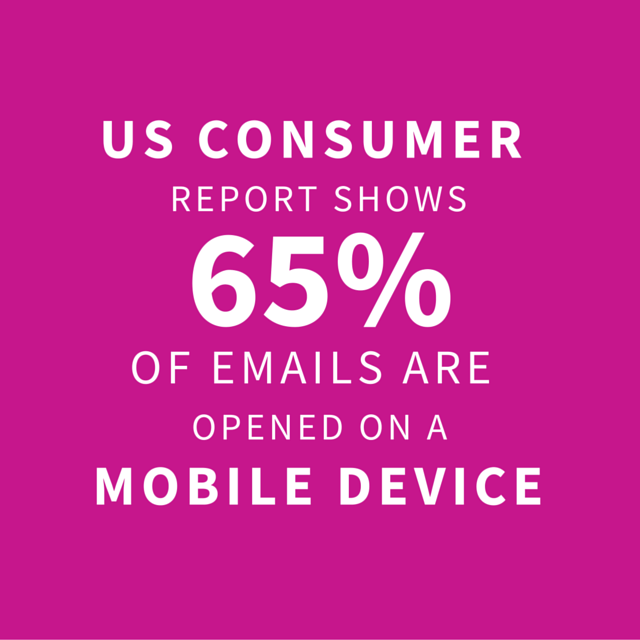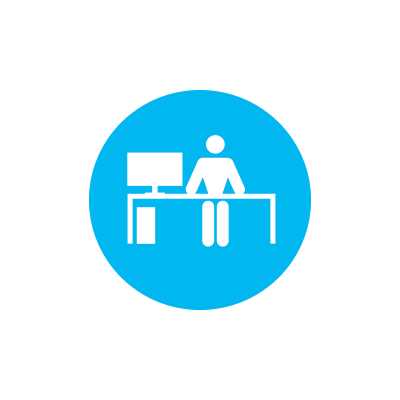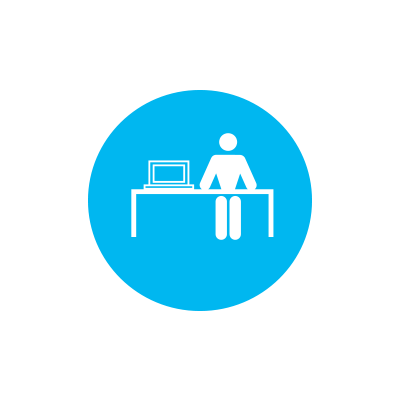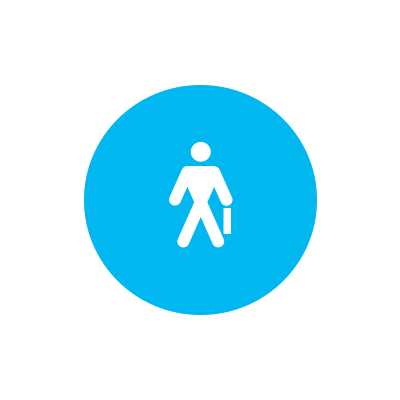Workplace trends like Generation Z, flexible working and rising real estate costs are acting as a catalyst for businesses to reassess their corporate real estate and make some vital changes to their workplace and culture.
3 key ways to smarten up your workplace
 There are three things that businesses can identify and address to ensure they stay in sync with current workplace needs and future trends.
There are three things that businesses can identify and address to ensure they stay in sync with current workplace needs and future trends.
- People
- Place
- Performance
People, place and performance work in unity, so just changing one won’t lead to success. You need to address all 3 aspects to create a productive and empowering organization.
People – A business’s most valuable asset
Start with this obvious yet often overlooked question: Is the real estate suited to the people?
The workplace needs to grow and evolve just like humans and successful businesses do. Working life used to be very simple. The vast majority of people travelled in to the same place of work each day, at the same time as everybody else. The inflexibility of the buildings enshrined routines and hierarchies with static space planning models, working cultures and long leases. In the past this inflexibility wasn’t seen as a major challenge facing their occupiers as there was no great call for flexibility when everybody – quite literally – knew their place.
Dynamic workplace
 This is not the dynamic world we now inhabit. The workplace is no longer merely a physical entity, we now work virtually and remotely too. The working environment for a growing number of people is a combination of physical, cultural and technological spaces.
This is not the dynamic world we now inhabit. The workplace is no longer merely a physical entity, we now work virtually and remotely too. The working environment for a growing number of people is a combination of physical, cultural and technological spaces.
Technological innovations like the laptop and smart phone have enabled people to work more remotely and this is only going to rise as the digital world evolves. People are no longer tied to their desk which has had a huge impact on the way people work and the growing demands for flexible working.
Accommodating flexible working is becoming the norm for many forward-thinking businesses. Allowing people to work different hours, across different locations and on different devices cannot afford to be left unaddressed if a business wants to attract and retain the best talent. It’s proven that flexible working boosts engagement and also satisfaction so why prevent it? People are a business’s most valuable asset after all.
The idea of having your desk, with your computer, working nine to five is also shifting. With this new found flexibility comes more agile job roles, broader skill sets and more collaborative approaches to tasks. Distances and time zones are no longer a major factor when it comes to working on projects. Technologies such as video conferencing and instant messaging have enabled people to collaborate seamlessly wherever they are situated. People have the ability to talk to co-workers at the click of a button and share files instantly.
Millennials
 Generation Z (GenZ) has also impacted the way businesses now attract young talent. This connected, tech-savvy generation is accustomed to working more dynamically across multiple devices and different locations. They’ve grown up with smartphones and the internet surrounding their everyday lives and form part of an ‘always on’ culture, a state where people are constantly checking emails, social updates, news and data. GenZ approach work in a drastically different way to the previous generation. This has driven a need for the modern workplace and practices to adapt to these new ways of working. Businesses who ignore these changing demands from the workforce do so at their own peril.
Generation Z (GenZ) has also impacted the way businesses now attract young talent. This connected, tech-savvy generation is accustomed to working more dynamically across multiple devices and different locations. They’ve grown up with smartphones and the internet surrounding their everyday lives and form part of an ‘always on’ culture, a state where people are constantly checking emails, social updates, news and data. GenZ approach work in a drastically different way to the previous generation. This has driven a need for the modern workplace and practices to adapt to these new ways of working. Businesses who ignore these changing demands from the workforce do so at their own peril.
Identify your 3 types of worker
Real estate teams need to consider their 3 types of worker when designing a productive workspace:
 Fixed – These people are almost always in the office and working from a desk. It makes sense for them to have fixed desk as they are always in to occupy it.
Fixed – These people are almost always in the office and working from a desk. It makes sense for them to have fixed desk as they are always in to occupy it.
 Flexi – Flexible workers are sometimes in the office but not always at a desk. They have meetings or clients to entertain most of the time, so are more suited to desk sharing schemes.
Flexi – Flexible workers are sometimes in the office but not always at a desk. They have meetings or clients to entertain most of the time, so are more suited to desk sharing schemes.
 Mobile – People that work all over the place e.g. home, cafes or other offices are known as mobile workers. They are barely in the office and do a lot of their work using portable devices when they’re on the go.
Mobile – People that work all over the place e.g. home, cafes or other offices are known as mobile workers. They are barely in the office and do a lot of their work using portable devices when they’re on the go.
By empowering individuals and offering them the resources, physical spaces and intelligent technological infrastructure they need, an organisation can not only meet the challenges of this new world of work, but achieve genuine competitive advantage.